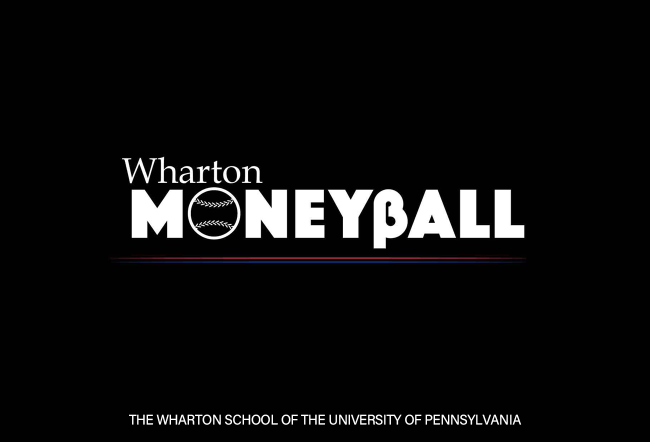Small business owners and self-employed individuals typically face financial and operational challenges. Artificial intelligence is giving them a leg up through applications such as smarter accounting software and fintech services like expanded access to capital. At the recent AI Frontiers conference in Silicon Valley, Ashok Srivastava, chief data officer at financial software firm Intuit, the creator of TurboTax, QuickBooks and Mint, spoke to Knowledge at Wharton about how his firm is using AI to “power prosperity for the current and future generations.”
An edited transcript of the conversation follows.
Knowledge at Wharton: How did you get interested in AI and data sciences?
Ashok Srivastava: It’s an interesting story. In some ways you might say it was predestined. My father was a mathematician and a statistician who worked in many areas of information science, experimental design and so forth. When I was young, he bought me a book on artificial intelligence (AI) and told me that I had to read it during the summer. Being the good son, I took it and I read it in the university library. It made a tremendous impact on me. Ever since I was a child, I was interested in making things do things for themselves. That was just my way of thinking. I remember that I used to think like that even while playing with toys. AI seemed to be the way to do it.
Well, I ended up reading that book and thinking about it, but frankly, I then put it aside and went about my journey in electrical engineering. I got a Ph.D. in electrical engineering and I focused on signal process and control theory and those types of fields. But towards the end of my Ph.D., I became interested in machine learning. That was the point where I started to work in machine learning and neural networks and bringing ideas from signal processing and time series into it. That got me into the field and I’ve been in it ever since.
Knowledge at Wharton: Intuit has more than 50 million customers. When you look at their financial data, what insights do you get about the economic challenges that young people, and especially small companies, face today?
Srivastava: The challenges are extraordinary. You don’t have to look into a vast data set to see them. If you look around what’s happening in our country and around the world today, what you see is that people are trying [to be successful]. Some are successful, some are at the borderline, and some are not as successful as they would want to be. As you look at that and as you understand what’s happening in the economic fabric of our society, you see that oftentimes people are trying their very best, but they might lack access to capital or access to knowledge or to mentorship or to market forces.
“Take QuickBooks Self–Employed. This is a platform that we’ve built which has AI behind it.”
One of the key challenges — and I think one of the great opportunities we have at Intuit — is to help bring such insights to individual users so that they can do better and have a better understanding of how they can manage their finances, whether they be professional finances or small business finances or personal finances.
Knowledge at Wharton: What has Intuit been able to do to help individuals, especially young people, deal with these challenges using AI and machine learning?
Srivastava: If you look at economy right now, you see the gig economy coming up. People are spending more time — both young people and older people — doing work for Uber, for Lyft and for other companies where they are parceling out their time to get a job. We’re building technology to help those people. Take QuickBooks Self–Employed. This is a platform that we’ve built which has AI behind it. For instance, if a person is driving for a ride-hailing company, they would not have to say: “This was a business trip / this was not a business trip” when they’re doing tax categorization. The machine does it for them automatically. It takes a good deal of machine learning and AI and data to enable something like that. That’s just one of the ways that we’re helping people who are in these new areas of our economy.
Knowledge at Wharton: How is AI changing the way in which you work with small businesses?
Srivastava: If you look at small businesses today, many of them need quick access to capital — for payroll, to buy inventory — to make the business run. Looking for loans or other opportunities to get money is very difficult for them. We have an AI-powered service — QuickBooks Capital — that allows small businesses to get rapid access to credit. If we do this at scale, it drives the entire ecosystem forward. This is one of the most exciting areas because it requires relatively little work on the part of an individual or a small business. We’re very proud of the results here. Some 60% of the members who use this service would not qualify for capital from other sources. It’s a process where we facilitate the capital flow for small businesses through other institutions, and we also provide capital ourselves. But the long-term goal is to do it through others.
Knowledge at Wharton: For borrowers, credit history is always one of the big challenges. There has been a move, especially by some of the fintechs, to come up with non-traditional measures of credit scoring. Has AI enabled Intuit to do these things? What are some of the lessons you’ve learned?
Srivastava: The models we use to understand a person’s past history and to make credit recommendations are based on AI. It’s a combination of methods that we bring together. We bring together rules as well as statistical learning in order to make that happen. It’s very critical that these things be done as close to real time as possible. We want to avoid a situation where a person applies [for a loan] and then waits for such a long time that the value of the capital is diminished.
Knowledge at Wharton: Do you see other banks using AI in the same way that Intuit is doing?
Srivastava: The financial services industry in total is starting to see that AI and machine learning are critical activities. That’s exciting for not only those of us in the business community, but also for those people who are consumers of these products, because it enables faster, more direct and much higher degree of personalization.
Knowledge at Wharton: How would you position what you’re doing at Intuit relative to some of the fintechs, especially some of the peer-to-peer lending groups?
Srivastava: Our approach is very customer-specific. We think about things from the customer’s needs and then build outward, rather than starting with the technology and then trying to build it forward. This focuses us on the immediate problems that small businesses and consumers face. The fact is that the technology might have some similarity with what others are doing, but the origination is really from a deep understanding of the customer’s problems and what we can do and how we are uniquely positioned to solve that.
Knowledge at Wharton: Does AI help you to manage risk better than previous technology did?
Srivastava: Indeed it does, because one of the things that’s happened, if you look over the last 20 years or so, is the advent of data. There’s also the advent of a tremendous number of rules, not only in the past 20 years, but probably ever since credit started many hundreds of years ago. These are rules on which we can make credit assignments. Well, what’s happening is that we’re starting to bring these two things together so that it can provide a better solution for the end customer. That’s one of the unique aspects of the work we’re doing.
“Some 60% of the members who use this service would not qualify for capital from other sources.”
Knowledge at Wharton: How do you benchmark what you are doing with AI at Intuit against financial institutions in other parts of the world? For example, in China, companies like Ant Financial and Tencent have made huge strides using AI. How do you benchmark yourself against those initiatives?
Srivastava: We keep a constant eye on what’s happening with our competitors and our partners and make sure that we have the right balance of technology. As far as benchmarking goes, we have a multi-fold, multi-pronged activity in which we’re not only focused on, let’s say, risk, but we’re also focused on security. We’re focused on governance. For the outside world, we’re also focused on products that can be enabled through chat interfaces, through interfaces that are alternatives to the traditional GUI. This gives us a differentiated portfolio. Each of these elements can be powered with AI and machine learning and statistical methods. That gives us a very rich portfolio to help the end consumer.
Knowledge at Wharton: Kai-Fu Lee’s book on AI Superpowers argues that Chinese companies are, in some ways, moving faster and are further ahead than American companies. Do you agree with that assessment? If so, what are some of the lessons that can be learned from some of the innovations you’re seeing in China?
Srivastava: There’s no doubt that artificial intelligence and machine learning are at the forefront of entire nations’ R&D activities, certainly in China, certainly in the United States and other parts of the world. You’ll find that there are pockets of activity where different parties, different countries, different researchers could be leading.
What I think is very critical in all of this is that we maintain the idea that within the developments that we’re doing — and now I’m talking about the AI community at large, regardless of the country that it’s originating from — the AI technology be powered in such a way that it helps the end consumer and the end business person or the end user in the most effective way. [At present], everyone does not necessarily take this for granted. As a practitioner of AI, as a person who has done research in this field and the field of machine learning specifically, I think it’s very important that we do that.
Knowledge at Wharton: Lee mentions a company in China called Smart Finance, which is using AI to make microloans to small borrowers. Is Intuit looking at using AI for microfinance?
Srivastava: We’re thinking about several ways to help end consumers. The specifics of whether it would be a microloan or not are things that we’re considering right now. But what I would say is that as we cast our vision out to understand what the key issues are for consumers and small businesses, if it’s something that we can do that’s differentiated, you can be sure that we’re thinking about it. If you look at Intuit’s origin about 35 years ago, it was extremely customer-driven. It was [always] trying to solve immediate customer problems and building the technology to do that. When you run things that way, it’s likely that the things where there is market demand for, where people have that urgent need, we’re going to be there to address it.
“The models we use to understand a person’s past history and to make credit recommendations are based on AI.”
Knowledge at Wharton: How do you see the relationship between financial inclusion through AI and financial education?
Srivastava: Let’s look at it as follows. When a person is starting up or running a small business, let’s say that they’ve decided to open up a new dry-cleaning service in Columbus, Ohio. They need to have the best data and tools available to run that business. That’s their enterprise. That’s what’s going to bring the money home to help their family and their children be successful. In that context, the way we’re thinking about it is that we have tremendous data, and also the ability to extract insights that would be relevant that helps that person make better financial decisions. It helps them bridge potential gaps that they might have in their financial literacy or education so that they can make better financial decisions.
In the old days, this was done through mentorship. That person might work with somebody else who ran a dry-cleaning business, let’s say in another city or nearby, and they might compare notes in order to do it. Our society isn’t quite built that way anymore. This is another way that we think we can bring that level of knowledge and expertise to individuals through a high degree of personalization that’s essentially powered by AI and machine learning and data.
Knowledge at Wharton: What are some of the things that AI cannot do today but which you hope it will be able to do over the next few years? What will be the next big breakthrough?
Srivastava: The conversation you and I are having this moment is not something that an AI system can do. Is it something that’s desirable? Well, we can discuss that another time. But I don’t think that we should assume that artificial intelligence capabilities are going to be able to do what humans can do well. As builders of these technologies, we need to see where they are best used and best suited, and then tailor them accordingly to drive those activities. I feel that the realm of creativity — music, art, poetry and literature — these are domains where humans will operate for a long time. I don’t mean to say that AI doesn’t have a role there, but I think we’re going to be very well-suited in those areas.
One of the most important things for people to remember is that artificial intelligence is a tool that can be used for many purposes. Here, we’re trying to think about ways to use artificial intelligence to power prosperity for the current and future generations. People need to come together to think about how to solve these big, grand challenges. If we don’t, we will be worse off as a society.



